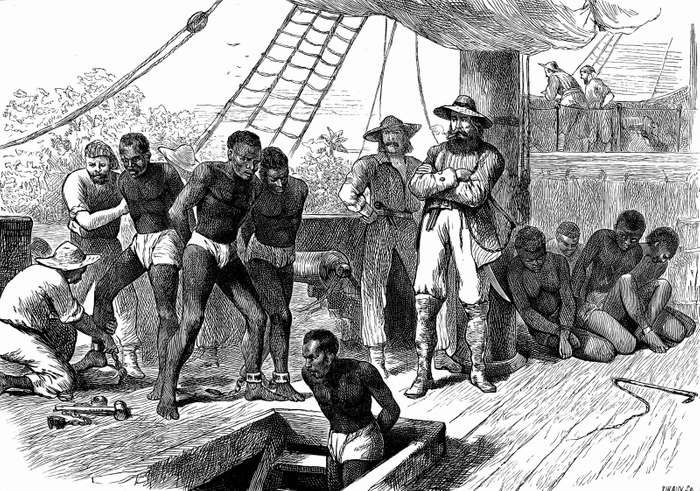
The Atlantic slave trade began in the mid-1400s and lasted into the nineteenth century. By the 1600s the Dutch contested the English and French for control of the trade, but England emerged as the dominant slave dealing nation. As the Empire expanded, slaves were sent across the seas to work on plantations in the Caribbean or the Americas. Small numbers were ferried into the ports of London, Liverpool, and Bristol. To hire African staff became a status symbol. Samuel Pepys employed a ‘blackmore’ cook, Dr Johnson engaged Jamaica-born manservant Francis Barber, and Royal Academy sculptor Joseph Nollekens recruited a female servant nicknamed Miss Bronze.
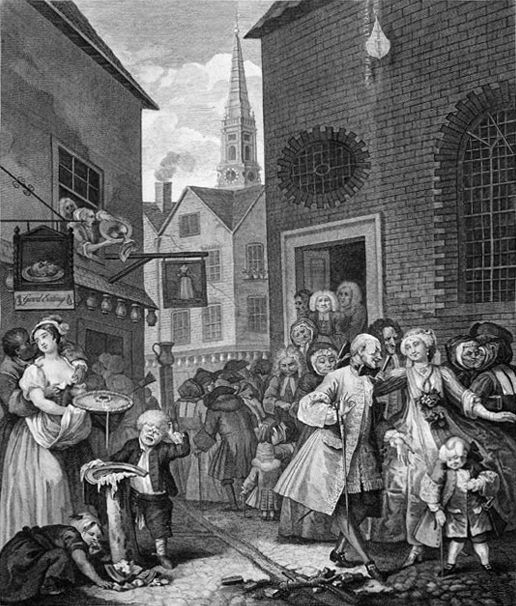
In London, the number of black people increased sharply when slave soldiers who fought on the side of the British in the American Revolutionary War (Black Loyalists) arrived in the capital. These soldiers were deprived of pensions and forced into beggary. The high visibility of deprived black people in London is evidenced by William Hogarth’s 1738 engraving ‘Four Times a Day: Noon’. In 1801 Maria Edgeworth published her second novel Belinda. The story caused controversy as it features the marriage between an Englishwoman and a manumitted Jamaican slave.
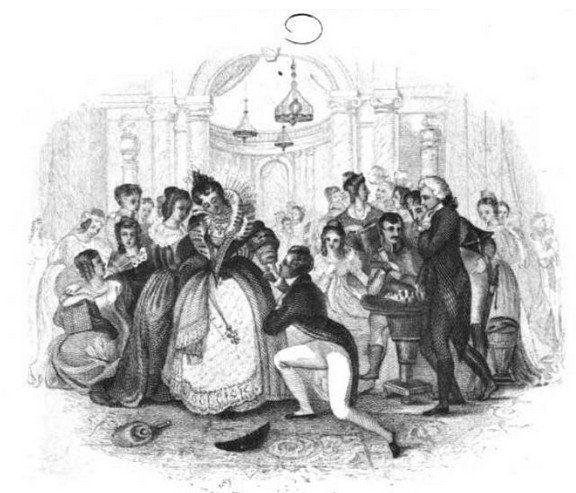
By the end of the eighteenth century the number of baptisms of black people was increasing. After conversion, Africans were given an English Christian name (John Baptist was a popular one). Notices of mixed marriages also grew. In 1773, a correspondent wrote to the LondonChronicle begging the public to save the ‘natural beauty of Britons’ from contamination. Simultaneously, the brutal nature of the slave trade gave rise to the abolitionist movement. The first protests were uttered by members of the Society of Friends. In 1783, a number of Quakers established the London Committee to Abolish the Slave Trade, Britain’s first anti-slavery society.
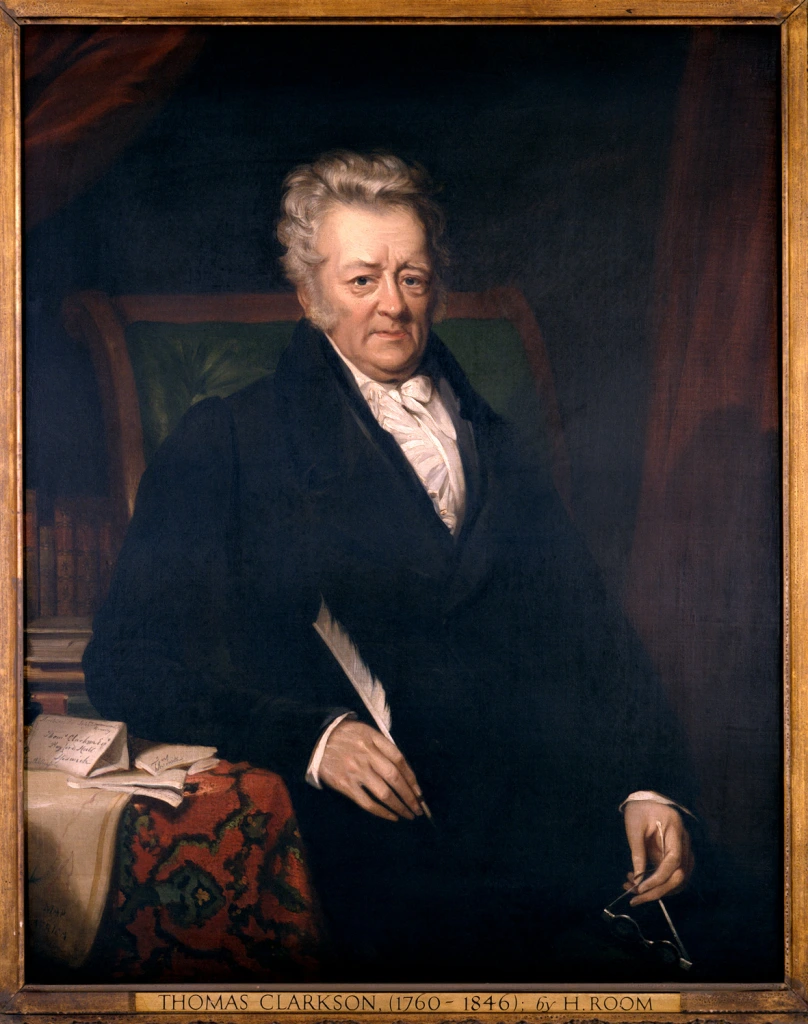
Thomas Clarkson was educated at St Paul’s School, City of London, and St John’s, Cambridge. In 1785, he won the College’s annual essay prize on the topic Anne liceat invitos in servitutem dare – is it lawful to enslave those who do not consent? Quaker bookseller James Phillips immediately published a translation of the Latin treatise as An Essay of the Slavery and Commerce of the Human Species, Particularly the African. For Clarkson, it was the start of a lifetime of pamphleteering. The Essayled to the creation of an informal committee to lobby MPs (nine of the original twelve members were Quakers) which succeeded in recruiting William Wilberforce.
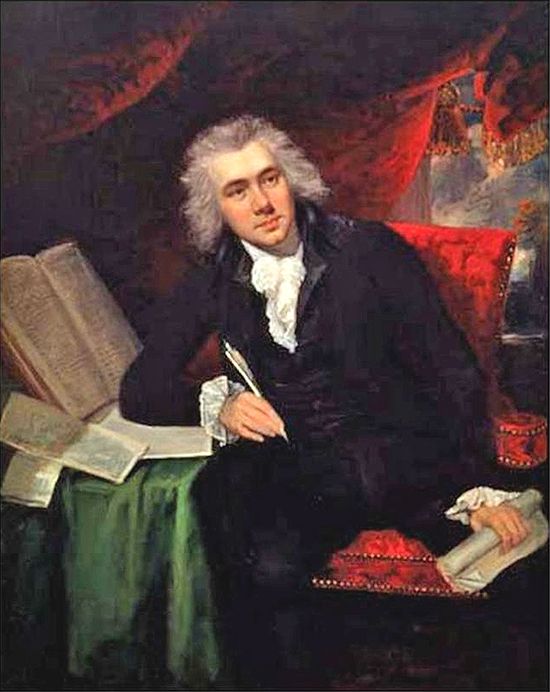
Clarkson was asked to investigate proceedings in the ports of London, Bristol, and Liverpool, and supply abolitionists with factual information concerning the slave trade. His findings formed the substance of the twelve propositions which Wilberforce put to Parliament in his historic speech on 13 May 1789. The push for abolition found public support. William Cowper’s poem ‘The Negro’s Complaint’ (1788) struck a chord and was followed by another poem entitled ‘Pity for Poor Africans’. During the campaign Josiah Wedgwood was commissioned (1790) to create a seal that could be used to spread the message. It had a picture of a kneeling black man in chains with round the edge the words ‘Am I not a Man and a Brother’. The jasperware plaque was turned into a campaigner’s badge.
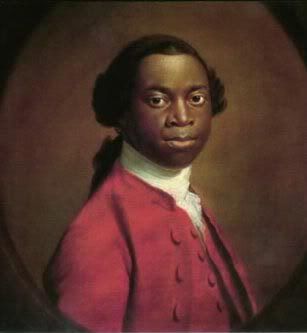
The ‘literary’ fight against slavery made an impression upon contemporaries. Olaudah Equiano was a former slave who, by the 1780s, lived as a free man in London where he joined the campaign against the trade. In March 1788 he sent personal letter ‘on behalf of my African brethren’ to Queen Charlotte. In the following year he published The Interesting Narrative of the Life of Olaudah Equiano, his autobiography. It tells of his kidnap in Nigeria, his being sold into slavery, his journey to the West Indies, his life as a slave, and the struggle to buy his freedom. Renamed Gustavus Vassa (the name he used throughout most of his life), he travelled to England in 1754, was converted to Christianity, and baptised at St Margaret’s Church, Westminster. Equiano’s autobiography was a commercial success. Between 1789 and 1794, nine editions were published and the book was translated into many languages. Equiano’s autobiography was almost instantaneously translated into Dutch as Merkwaardige levensgevallen van Olaudah Equiano of Gustavus Vassus, den Afrikaan, published in 1790 by Pieter Holsteyn in Rotterdam (two years before the German translation; a French rendering did not appear until 2002).
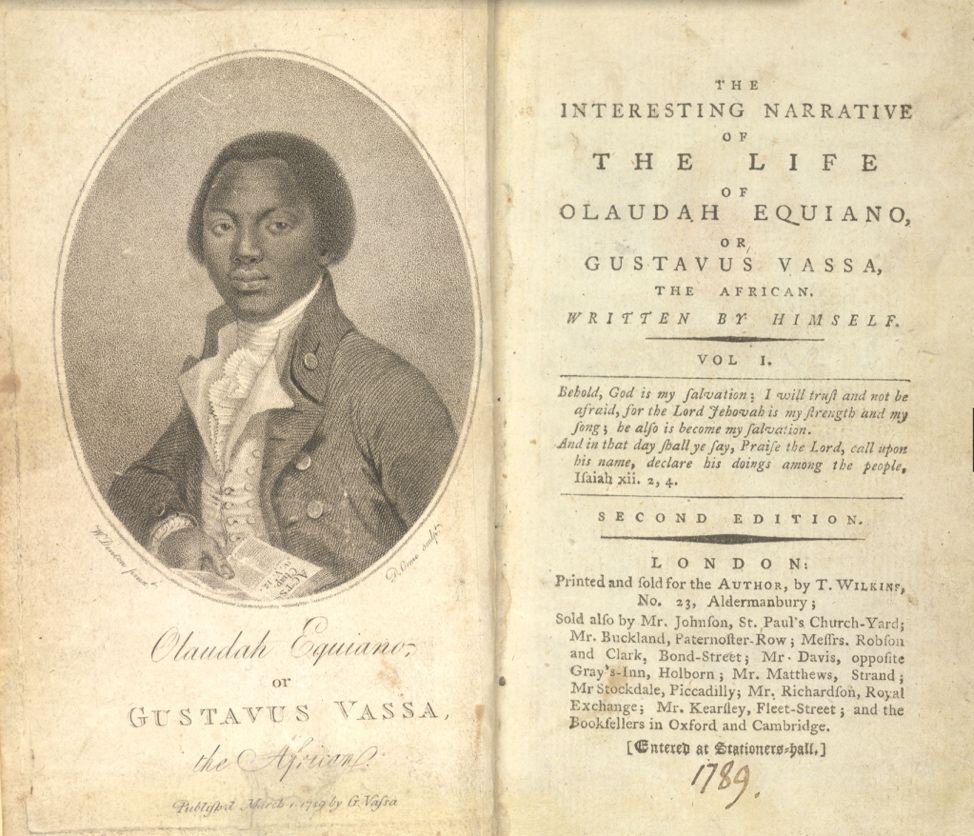
In 1807 the Slave Trade Act was passed prohibiting the practice in the British Empire. William Wordsworth celebrated the event by dedicating a sonnet to Thomas (‘Clarkson! it was an obstinate hill to climb’). A year later, Clarkson published a two-volume History of the Rise, Progress, and Accomplishment of the Abolition of the African Slave-Trade. The Act did not abolish slavery itself. In 1823, the Anti-Slavery Society was formed which eventually led to the passing of the Slavery Abolition Act a decade later. Clarkson presided over the opening session of the grand anti-slavery convention in the Freemasons Hall at Great Queen Street on 12 June 1840 (recorded in a painting by Benjamin Haydon).
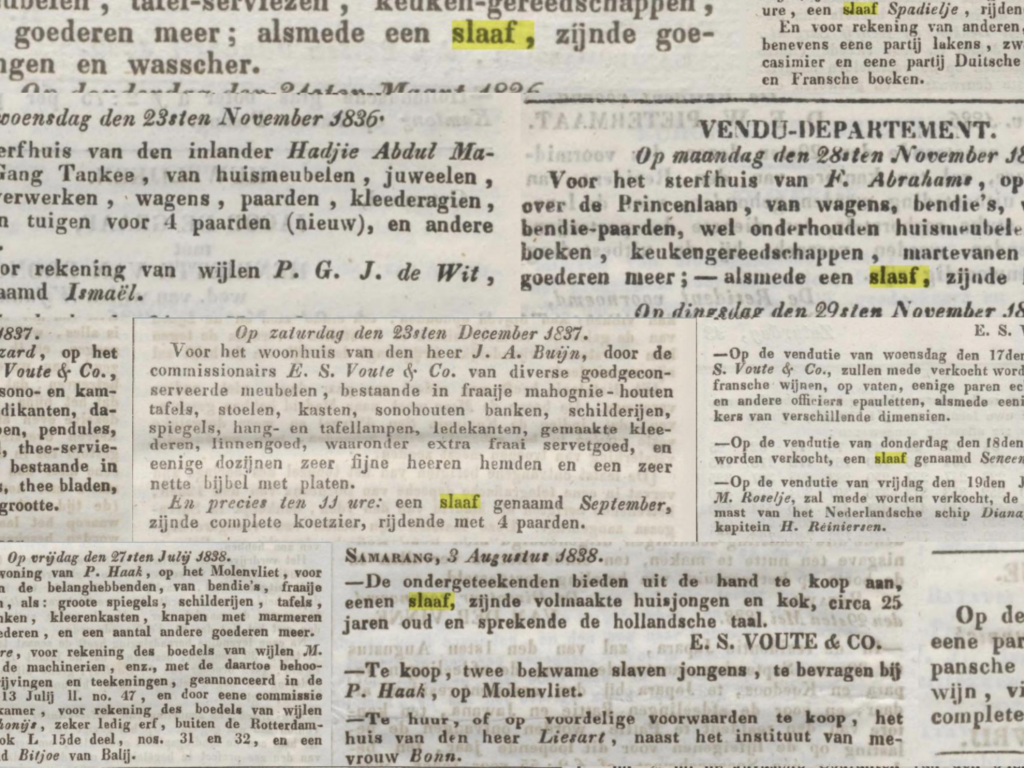
[More Dutch advertisements for slaves in the East Indies]
The voice of English abolitionists was heard in the Netherlands. Involvement in slave trafficking had started early and the Dutch were amongst the last to abandon the trade. After Denmark in 1803, Britain in 1834, and France in 1848, slavery was finally made illegal in the East Indies in 1862, and in Surinam and the Antilles a year later. The moral push towards abolition had been made much earlier. In 1822, Amsterdam publisher C.A. Spin simultaneously issued two translations of anti-slavery documents. One is Clarkson’s De kreet der Afrikanen tegen hunne Europeesche verdrukkers; the other title is Aanspraak aan de volken van Europa over den slavenhandel by Josiah Forster, a leading Quaker abolitionist. There was, it seemed, British-inspired pressure in the Netherlands to abolish slavery. Why then took it so long for the Dutch government to act and allow the pro-slavery lobby to protect its economic stake in the practice?
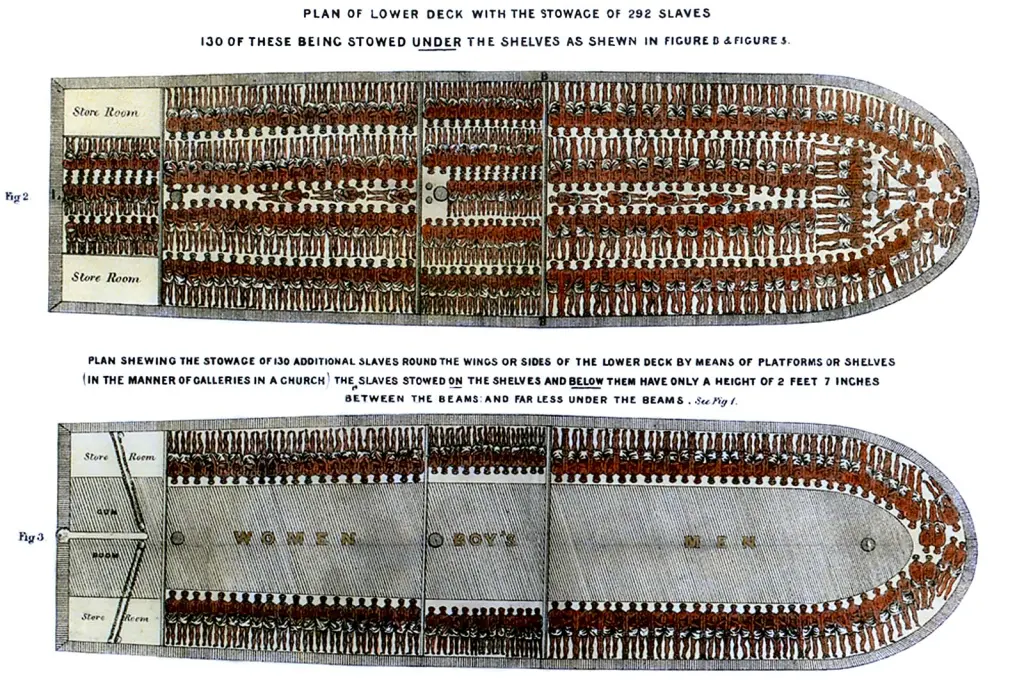
History is made by people. No single person determines the course of development, yet one cannot exclude the ‘subjective factor’ in historical discourse. Individual audacity — or lack of it — is part of the social struggle. Mid-twentieth century historians argued that slave emancipation in England owed little to the efforts of abolitionists. Slavery had become an obsolete economic system which collapsed because it was no longer fit for purpose. This interpretation is untenable. At times of crisis or major socio-economic transformation, strategic leadership is of crucial importance. The campaign by a vocal anti-slavery lobby did have an impact and the relentless efforts made by Clarkson and his Quaker friends paid off. The Dutch movement lacked decisive governance able to assail vested interests. Abolitionism never attracted more than a few hundred activists who were good-willing academics or God-fearing ministers. Crusaders, not enforcers; preachers, not protesters.
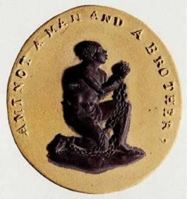
Wedgwood jasperware plaque ‘Am I not a Man and a Brother’ (1790).